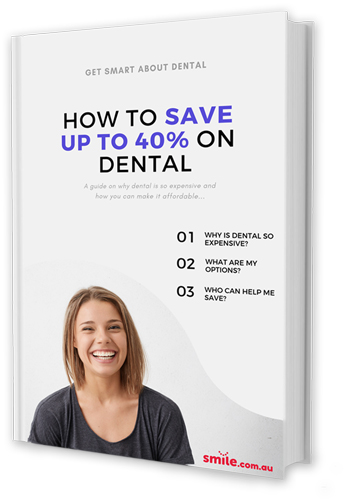How To Stop And Get Rid Of A Toothache
Reviewed June 2024 by Our Content Experts
A toothache can stop you from doing the things you love. It can make eating hot and cold foods impossible and can leave you in unbearable pain. If left untreated, it can lead to more serious issues than missing out on ice cream.
The only way to properly diagnose and treat a toothache is to visit a dental professional, but there are several home remedies that can provide temporary relief until your appointment.
Here are the most common toothache causes, symptoms and triggers, and how to get rid of your toothache fast.
What causes a toothache?
A toothache occurs when the pulp inside of your tooth becomes irritated. The pulp is filled with sensitive nerves and living tissue, causing pain to the tooth and jaw when inflamed.
Toothaches are often a result of tooth decay that has reached the pulp, but there are several other factors that can cause a toothache, including:
- Infection
- Gum disease
- Grinding teeth (bruxism)
- Tooth trauma
- An abnormal bite
- Tooth eruption (in babies and school-age children).
Sometimes what feels like a painful toothache can actually be unrelated to your teeth. Joint disorders, sinus or ear infections and tense facial muscles can lead to discomfort that feels like a toothache but these health issues are commonly also accompanied by a headache.
You will need to be examined by a dental professional to determine the cause of your toothache.
What can trigger a toothache?
Certain foods and drinks can intensify the pain of a toothache. While a toothache is present, you may want to avoid the following triggers:
- Very hot or cold drinks or food
- Sweet foods
- Biting down on anything
- Putting other pressure on the tooth.
What food should I eat when I have a toothache?
It is best to stick to soft foods while experiencing tooth pain to avoid triggering excess pain. These include:
- Yoghurt and soft cheese
- Milkshakes and meal replacement drinks
- Soft fruits such as banana and watermelon
- Noodles and pasta
- Mashed potatoes
- Scrambled eggs.
What are the symptoms of a toothache?
The most obvious sign of a toothache is pain in the tooth and mouth but the pain can present in a variety of ways:
- Sharp, throbbing, or constant pain
- Tooth pain that only occurs when pressure is applied
- Swelling, painful gums
- Bad taste in the mouth
- Fever or headache.
If there is pus present near the source of pain, you may have developed an abscess, indicating that the surrounding bone is infected. Pus could also be a sign of gum disease.
It is important to visit your dentist if you have a toothache. Contact your dentist immediately if you experience any of the following symptoms:
- Fever
- Trouble breathing or swallowing
- Swelling in tooth area
- Pain when biting
- A bad-tasting discharge
- Constant lasting pain.
The pain of a toothache will often increase the longer it is left untreated. It will also increase your chances of developing more serious health problems associated with the cause of your toothache.

How to deal with toothache pain
There are several at-home remedies you can try to reduce the pain of your toothache in the short-term. Although these can assist in decreasing pain, it is always best to visit your dentist to determine the cause of your toothache.
Steps you can take at home to alleviate the pain and swelling include:
- Take a painkiller
- Apply a cold pack
- Apply numbing gel
- Thoroughly clean your mouth
- Rinse with salty water.
These steps can only provide temporary relief and should not be relied on as a permanent solution for your tooth pain.
How to prevent a toothache
You can prevent getting a toothache by following good oral hygiene practices. These steps can help you decrease your chances of developing tooth decay and cavities which can result in tooth pain:
- Brush thoroughly at least twice a day
- Floss daily
- Have your teeth professionally cleaned by your dentist twice a year.
Combine your dental care routine with regular examinations by your Smile approved dentist to maintain your oral health.
Should I visit the dentist?
Yes. Tooth pain can be a sign of more serious dental and health issues. There is no way to determine the cause of your toothache or the severity of your medical condition without a thorough examination from a professional dentist.
If you're experiencing a toothache, don't wait for the pain to increase or your oral health to deteriorate before you seek a professional diagnosis and treatment. Visit a Smile approved dentist and get the quality affordable dental care that you need today.



